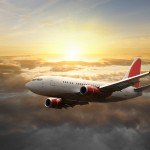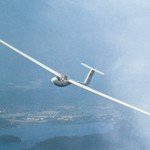Going to an airshow can be a great experience. This is true, not only for the aerial demonstrations, but also the opportunity to see a wide variety of aircraft on static display. At these events, one quickly realizes there are many kinds of designs created with a particular mission in mind.
An aircraft is a vessel designed to move through the air. An airplane is a popular example of this type of vessel but there are many others. Helicopters, airships, and hot air balloons are also examples of different types of aircraft. An airplane may be one of the most recognizable types of aircraft. These vessels have fixed wings and propellers. Their body styles can greatly vary as there are many types and sizes of airplanes used for numerous reasons. These include seaplanes and jets.
Most airplanes require a runway for takeoff and landing. Some (like the Harrier) don’t. Seaplanes are an exception. These flying vessels can take off and land on water. One type, known as a floatplane, has floating structures extending from the bottom of the plane’s body to prevent it from touching the water. Another type, known as a flying boat, tends to have floating devices under the wings because part of the body rests in the water.
There are various types of aircraft that you can find in today’s skies. There are the helicopters, twin pistons, turboprops, executive jets, airliners, and cargo aircraft. Let’s take a few minutes to distinguish each of the types of aircraft one by one.
Lighter than air

Lighter than air aircraft or aerostats use buoyancy to float in the air in much the same way that ships float on the water. They are characterized by one or more large gasbags or canopies, filled with a relatively low density gas such as helium, hydrogen or hot air, which is less dense than the surrounding air. When the weight of this is added to the weight of the aircraft structure, it adds up to the same weight as the air that the craft displaces.
Originally, a balloon is any aerostat, while the term airship was used for large, powered aircraft designs – usually fixed-wing – though none had yet been built. The advent of powered balloons, called dirigible balloons, and later of rigid hulls allowing a great increase in size, began to change the way these words were used. Huge powered aerostats, characterized by a rigid outer framework and separate aerodynamic skin surrounding the gas bags, were produced, the Zeppelins being the largest and most famous. There were still no fixed-wing aircraft or non-rigid balloons large enough to be called airships, so "airship" came to be synonymous with these aircraft. Then several accidents, such as the Hindenburg disaster in 1937, led to the demise of these airships. Today a "balloon" is an unpowered aerostat, while an "airship" is a powered one.
Heavier than air

Heavier-than-air aircraft must find some way to push air or gas downwards, so that a reaction occurs (by Newton's laws of motion) to push the aircraft upwards. This dynamic movement through the air is the origin of the term aerodyne. There are two ways to produce dynamic upward thrust: aerodynamic lift, and powered lift in the form of engine thrust.
Aerodynamic lift is the most common, with fixed-wing aircraft being kept in the air by the forward movement of wings, and rotorcraft by spinning wing-shaped rotors sometimes called rotary wings. A wing is a flat, horizontal surface, usually shaped in cross-section as an aerofoil. To fly, air must flow over the wing and generate lift. A flexible wing is a wing made of fabric or thin sheet material, often stretched over a rigid frame. A kite is tethered to the ground and relies on the speed of the wind over its wings, which may be flexible or rigid, fixed or rotary.
Rotorcraft

Rotorcraft, or rotary-wing aircraft, use a spinning rotor with aerofoil section blades (a rotary wing) to provide lift. Types include helicopters, autogyros and various hybrids such as gyrodynes and compound rotorcraft.
Helicopters have powered rotors. The rotor is driven (directly or indirectly) by an engine and pushes air downwards to create lift. By tilting the rotor forwards, the downwards flow is tilted backwards, producing thrust for forward flight.
Autogyros or gyroplanes have unpowered rotors, with a separate power plant to provide thrust. The rotor is tilted backwards. As the autogyro moves forward, air blows upwards through it, making it spin.(cf. Autorotation)
This spinning dramatically increases the speed of airflow over the rotor, to provide lift. Gyrodynes are a form of helicopter, where forward thrust is obtained from a separate propulsion device rather than from tilting the rotor. The definition of a 'gyrodyne' has changed over the years, sometimes including equivalent autogyro designs. The most important characteristic is that in forward flight air does not flow significantly either up or down through the rotor disc but primarily across it. The Heliplane is a similar idea.
Matching: Using the following vocabulary list, match the lettered aircraft images with their appropriate terminology.
| Fixed-wing floatplane | Blimp | Glider |
| Rotorcraft | Fixed-wing | Balloon |
a) |
b) |
c) |
d) |
e) |
f)  |
A___________
B___________
C___________
D___________
E___________
F___________
Answers: (A) balloon (B) fixed-wing (C) rotorcraft (D) fixed-wing floatplane (E) blimp (F) glider



